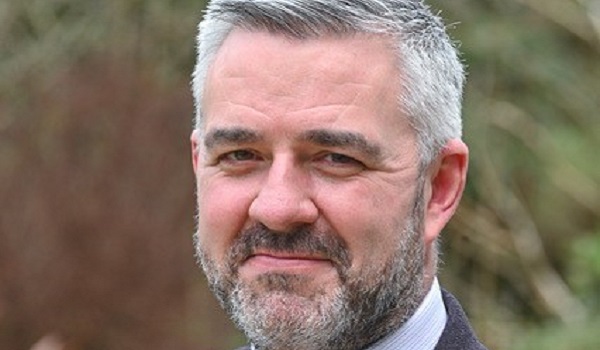Accentuate the positive
In the first of a new quarterly column for Police Professional, His Majesty’s Inspector of Constabulary Andy Cooke QPM reflects back over his time in the role and picks out examples of good practice around wellbeing.
It is now six months since I was appointed as His Majesty’s Chief Inspector of Constabulary. Although this is a new role for me, it follows more than three decades in policing and a year at HMICFRS – but I believe there is still plenty to learn.
The last couple of years have seen some huge challenges for policing. Last month, the Metropolitan Police Service – with support from other forces across the country – managed one of the biggest policing operations in history when Her Late Majesty Queen Elizabeth II was laid to rest. All those involved should be proud of the part they played in this historic moment while the whole world looked on.
Scrutiny of policing is arguably at an all-time high, and with good reason. The public’s trust in the institution has been severely damaged. Public confidence in the police is more than precious, it is essential – and so it is right that forces are held to account and scrutinised to identify what they are doing well and where they can stand to improve. But I have been outspoken, and will continue to be, about the increasing complexity of the demand on policing.
You are the service of first, last and sometimes only resort. It’s not just crime that falls to policing anymore. Realistically, forces cannot meet all projected demand; budgets are limited, and the full benefits of the uplift programme are yet to be seen. The public get what they are prepared to pay for. Each force must balance the national priorities for policing with those established by its local policing body.
As many officers and staff will know, we published a report in August on the police response to burglary, robbery and theft. It did not make positive reading – almost across the board, things need to improve, from better call handling to improving supervision and oversight of investigations.
However, it isn’t all doom and gloom. What struck me while we prepared the burglary report were the examples of innovative, effective practice my team identified in different forces. These included Hertfordshire Constabulary’s older person liaison officer scheme, where investigators can refer vulnerable victims for additional support, to South Yorkshire Police’s conditional cautions, which tackle the causes of offending. We shone a light on those examples to help inspire other forces – and we will continue to champion and promote best practice across the policing landscape.
We are currently in the middle of our continuous PEEL assessment programme, which assesses the effectiveness, efficiency and legitimacy of police forces in England and Wales. While these inspections, 25 published so far in the 2021-22 round, can and do identify failings and areas of serious concern within forces – which we will always be transparent about – they also allow us to recognise where police leaders, officers and staff are doing well and making a difference to their force and community.
While many forces are dealing with detective and officer shortages, something the recruitment uplift may help improve, we’re encouraged to see many forces achieving good grades in building, supporting and protecting the workforce. This is vital for retaining and developing experienced officers and staff and supporting new recruits. Generally, forces are good at assessing the capacity and wellbeing of their workforces. They know how many people or resources they have and how available they are, monitor sickness absences in staff and officers, and are increasing the provision for mental as well as physical health.
Workforce wellbeing is generally a priority for forces, with a fair range of support offered. Forces should properly consider staff wellbeing when making decisions around demand management, to ensure their efforts to support the workforce are not undermined.
Through our inspections we have identified some forces that have implemented good or innovative practice which supports staff wellbeing. Examples include:
- Within the force control room a ‘welfare button’ is available for call handlers who have dealt with a traumatic call. Activation immediately removes the call handler and notifies a supervisor who can provide support for the staff member. The force control room has break out areas and quiet rooms for decompression from such traumatic calls.
- A scheme called ‘pause point’ whereby a staff member can request a break from the working environment to support their mental wellbeing, or a manager can suggest a pause from the role for wellbeing reasons. This seeks not only to support staff welfare during a difficult time but also to prevent long term sickness absence through early intervention.
- Enhanced wellbeing support with close monitoring, provision of specialist support and the use of psychological assessments for staff working in high risk, high harm environments.
- Offering wellbeing services such as therapy, parenting workshops, use of fitness trackers, fitness classes, training events led by external experts, employee assistance programmes, wellbeing dogs, gyms, cancer buddy network, suicide prevention, blue light champions, financial wellbeing, well-being van, trauma support network.
I could go on. There are many examples of good work within policing. I know this isn’t always the picture painted by the media, and at HMICFRS we will never shy away from identifying and reporting on necessary improvements, but I really do want to stress that we are also here to highlight the positives. We’ll continue to do this in the hope it will inspire other forces and police leaders to follow suit. I look forward to finding more good and innovative practice and using this column to communicate it to you.






